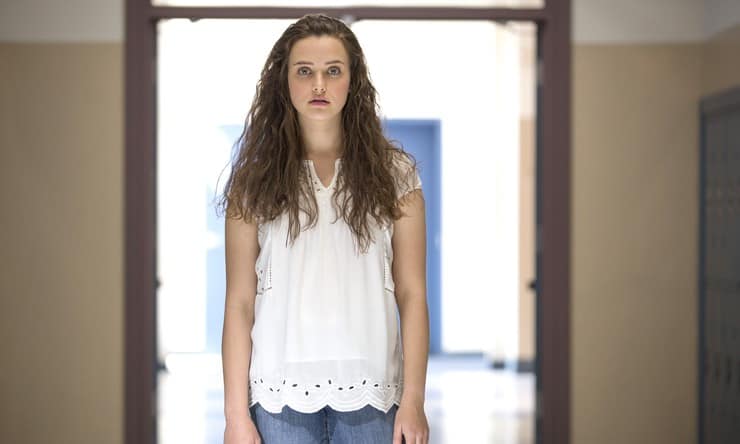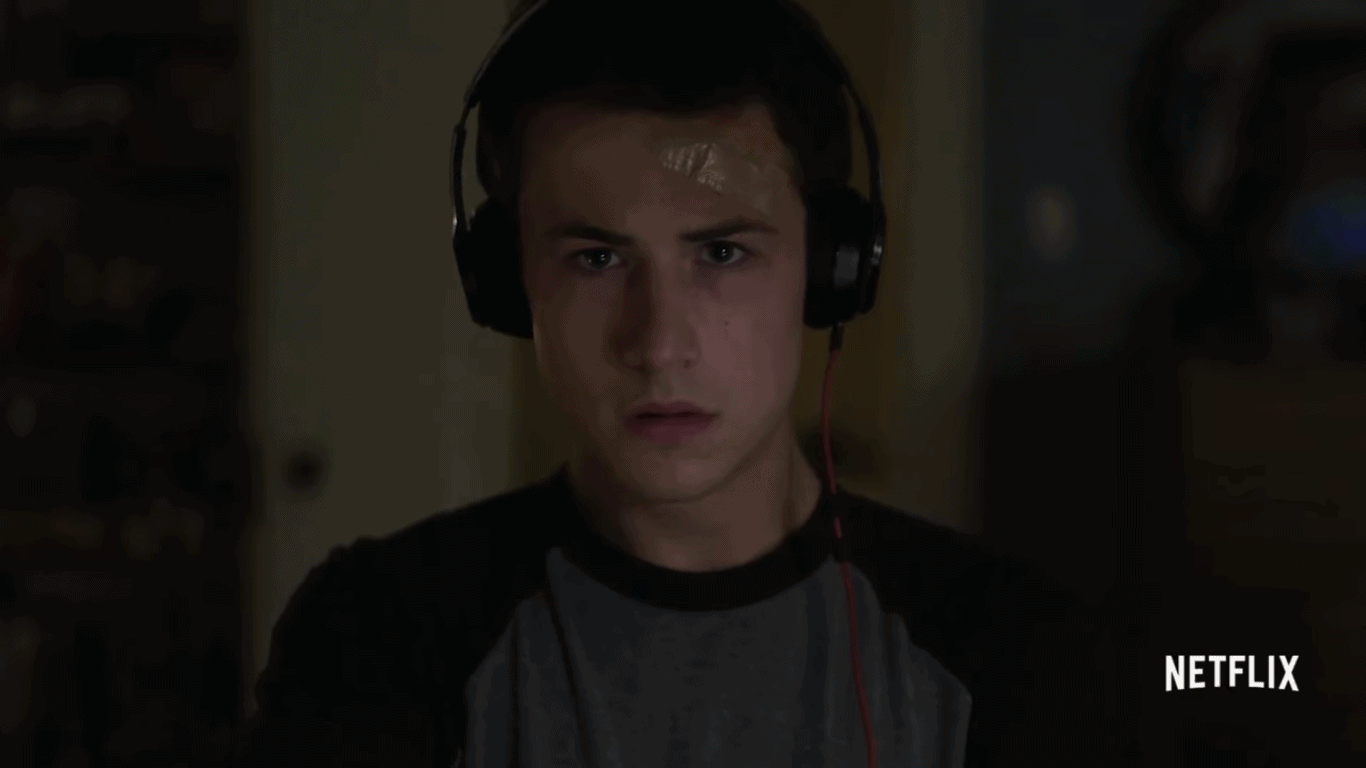Content Warning: Nearly every episode of the Netflix series 13 Reasons Why contains content “that some viewers may find disturbing and/or may not be suitable for younger audiences.” The warning is well-deserved as the series abounds with graphic descriptions and depictions of violence, underage drinking, drug usage, sexual assault, and suicide…
Yet, as Selena Gomez—who was one of the executive producers—comments, “We wanted to make something that can hopefully help people.”1 And, Selena did it. They’ve made it hard to stomach the depictions of adolescent suffering and suicide, but they also made it real. The hope is that the series will change us into braver and bolder people—willing to reach out when we need, and willing to offer help to those silently suffering.
There are several resources for those struggling with sexual abuse and suicide listed at the bottom of the article—many of which will provide support anonymously. If you, or someone you know, might need help… Please talk to someone.
*****
“Hey, it’s Hannah. Hannah Baker.
Don’t adjust your… whatever device you’re hearing this on.
It’s me, live and in stereo.
No return engagements, no encore, and this time, absolutely, no requests.
Get a snack. Settle in.
Because I’m about to tell you the story of my life.
More specifically, why my life ended.
And if you’re listening to this tape, you’re one of the reasons why.”
—Hannah Baker
The haunting words from beyond the grave immediately pulled me into Jay Asher’s novel Thirteen Reasons Why. The basic plot is that Hannah Baker, a young teenager girl, has recorded a series of 13 reasons why she committed suicide. The book follows Clay, a friend of Hannah’s, as he wrestles with hearing the tapes of Hannah’s full story—her slow spiral out of hope and towards inevitable suicide. Each side to the tapes is associated with one person or interaction which Hannah attributes to her end.
“Is it you? How did you end up on these tapes? Maybe you did something cruel, or maybe you just watched it happen. Maybe you didn’t realize you were being cruel. Maybe you didn’t do anything at all. Maybe, you should have. Too late.”
—Hannah Baker
The book held a frantic energy, both of Clay following Hannah’s story and Clay’s question: “Why am I on the tapes?!” Clay’s struggle affects the reader who accompanies him, agonizing both through Hannah’s story and the reader’s own horror underlying Clay’s question: how have I played a part in someone’s suffering? … I ran through the entirety of the book in a single sitting, but it left me raw—I couldn’t put it down, but it wasn’t an “easy” read.
But, watching the Netflix adaptation was much harder: I cursed at the screen, I had to mute it and look away, and I cried—several times. Hannah’s slow, painful spiral from the novel was even harder to stomach as it appeared vividly on the screen.
“What happened to Hannah,
I wish that would never happen to any other kid, ever.
And if giving you this helps then…”
—Tony Padilla
According to the short feature, 13 Reasons Why: Beyond the Reasons, the series creators and actors consulted health professionals, survivors, and families affected by sexual assault. That attention to accuracy communicates the pain and the terror of the victim, the stomach-turning violence of the action, and rippling consequences of such an atrocious event.
In addressing the sexual assault that occurs within the novel, the producers “didn’t look away, because to look away is to minimize what the character and teenage girls go through every day.” So, we see it, and it physically hurts to watch. When talking about ‘table reads’ of the assault in the script, Justin Prentice claimed “that just reading it on paper was devastating.”
But seeing it vividly portrayed is far worse. The depiction does not glorify or romanticize, but pierces with the horror and reality of it all. It is violence not minimized to entertain, but designed to shock you away from accepting that such a reality is in any way tolerable.

Beth Dubber Netflix
Similarly, the series shows Hannah Baker’s suicide on screen. Watching is a visceral experience… My heart raced as Hannah prepares and eventually climbs into the bathtub. My stomach knotted as Hannah cringes and begins crying as she cuts her wrists. And then, as she sits there in visible despair, I uncomfortably sat covering my mouth so as not to curse too loudly or scream. All the while, Hannah and I quietly cry… It is slow. It is uncomfortable. It is not sentimentalized or celebrated. As the producers claim: “We worked very hard not to be gratuitous, but we did want it to be painful to watch, because we wanted it to be very clear that there is nothing… in any way… worthwhile about suicide.”
In many ways, that response reflects a central goal of the Netflix series: to illuminate the difficult content—to show the seriousness of the sexual assault and suicide.
As I sat and watched the series, I needed to take breaks and take walks: it was too heavy, too real. The actors expertly communicated the gravity of the topics, pulling me into their pain and struggle. By portraying these topics as it did, the Netflix series elicits the viewer’s reaction to the seriousness of the content. It was unsettling, difficult to stomach, and hard to imagine… But, so are the topics of suicide and sexual assault.
“Some of you cared. None of you cared enough. Neither did I. And I’m sorry.”
—Hannah Baker
“I think we should blame ourselves. I think we all could do better.”
—Clay Jensen.
I cursed, cried, cringed, screamed, and could barely stop shaking at moments … which shows how effectively the creators communicated the genuine pain involved. That discomfort though is meant to lead to discussion and eventually to hope. As Thirteen Reasons Why author Jay Asher conveys: “The whole issue of suicide is an uncomfortable thing to talk about. But it happens, so we have to talk about it. And it’s dangerous not to talk about it, because there is always room for hope.”
The Netflix series creators along with the author all hope for one thing: we can be better. In 13 Reasons Why: Beyond the Reasons the actors and producers communicate their hope that the series will lead people to talk about the topics of sexual assault and suicide. They hope that we will be encouraged to seek help, and to realize that suicide should never be an option.
Even further though, they hope that the series will communicate the seriousness of reaching out to those who are suffering. They hope, that all of us will be better towards one another. Perhaps, each of us only ever know 1/13th of someone’s story, and maybe that’s why it’s so important for us genuinely to care for others. There seemed to have not only been 13 reasons, but 13 different opportunities for things to go differently for Hannah, for people to care—and that’s the hope of the series.
As Clay offers towards the end: “It has to get better, the way we treat each other and look out for each other—it has to get better somehow.”
*****
Resources for Help:
- National Suicide Prevention Hotline: 1-800-273-8255
- Military Veterans Suicide Hotline: 1-800-273-TALK (Press 1).
- Suicide Hotline in Spanish: 1-800-273-TALK (Press 2).
- LGBT Youth Suicide Hotline: 1-866-4-U-TREVOR
- 13 Reasons Why Resource Site
- Quotation from Netflix’s documentary: 13 Reasons Why: Beyond the Reasons. For further commentary by Selena Gomez on her involvement in the project see her interview with NYTimes. ↩


